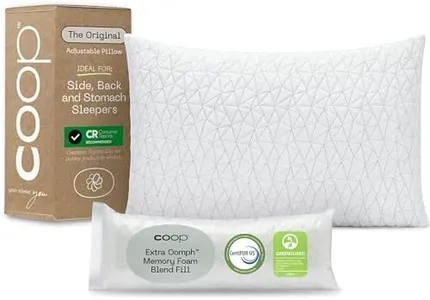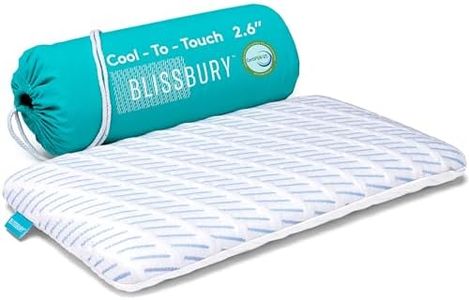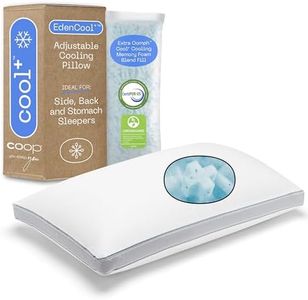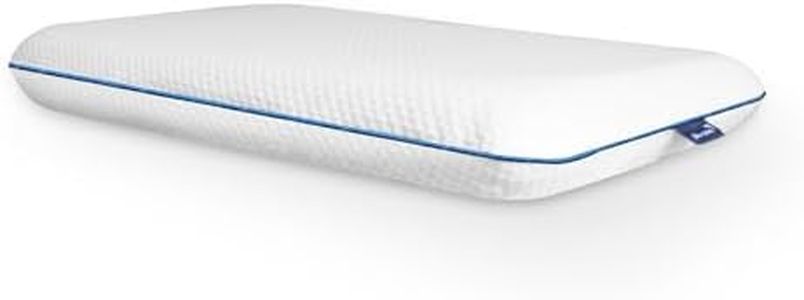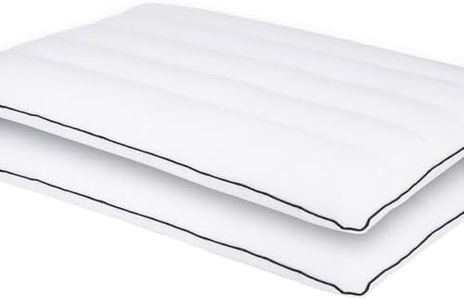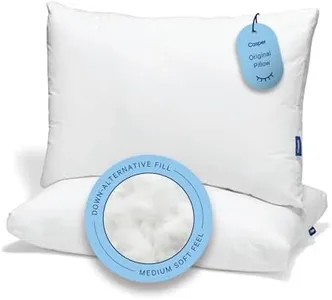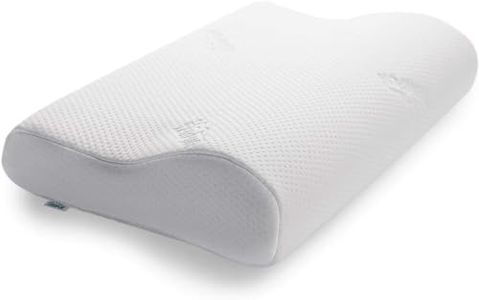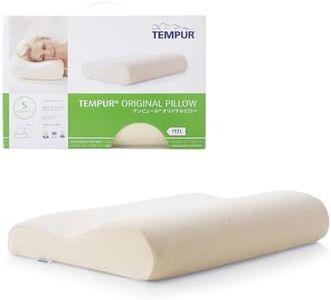We Use CookiesWe use cookies to enhance the security, performance,
functionality and for analytical and promotional activities. By continuing to browse this site you
are agreeing to our privacy policy
10 Best Thin Pillows
From leading brands and best sellers available on the web.Buying Guide for the Best Thin Pillows
Selecting the best thin pillow is all about understanding your unique sleeping needs and preferences. Thin pillows can be ideal for certain sleeping positions and body types, and making the right choice can really improve your comfort and quality of sleep. When shopping, it’s important to focus on what makes a pillow truly 'thin,' as well as the material, firmness, and breathability. Considering these key characteristics will help you choose a pillow that balances support with comfort, tailored just for you.Thickness (Loft)Thickness, sometimes called loft, is how high the pillow stands when it’s not compressed. For thin pillows, this usually means under 3 inches. Thickness is important because it directly affects the alignment of your head, neck, and spine. Lower thickness is often better for stomach sleepers or people with smaller frames who want to avoid neck strain; back sleepers who prefer minimal head elevation may also enjoy a thin pillow. When considering thickness, think about your sleeping position; if you sleep on your stomach, a lower pillow helps keep your spine neutral. Thicker pillows are more for side sleepers, so stick to classic 'thin' measurements for true thin-pillow benefits.
MaterialThis refers to what the pillow is made from inside and out. Common filling materials include memory foam, down, feather, synthetic fiber, and latex, while covers are typically cotton or polyester. The material affects softness, support, durability, and how much the pillow compresses over time. Memory foam thin pillows tend to hold their shape, down or feather ones are softer and squish down more, and synthetic fills are usually most budget-friendly but compress easily. If you have allergies or specific preferences about firmness or airflow, let those needs guide your choice of material.
FirmnessFirmness measures how much the pillow resists weight and how supportive it feels beneath your head. Thin pillows come in soft, medium, or firm, and this can make a huge difference depending on your comfort level and sleeping habits. Softer thin pillows are great if you want your head to sink closer to the mattress, while firmer ones provide more consistent neck support. Stomach sleepers often choose soft or medium, back sleepers may prefer medium, and people with broader shoulders usually need more firmness despite the thin profile. Choosing the right firmness is about striking a balance between comfort and healthy posture.
BreathabilityBreathability is about how well the pillow lets air flow through, helping you stay cool and comfortable. Some materials trap heat, while others, like natural fibers (cotton or feather), allow better ventilation. If you tend to get hot at night or live in a warm climate, pay attention to this feature. Pick a pillow that mentions cooling properties or uses naturally breathable materials for a fresher sleeping experience.
Shape RetentionShape retention means how well a pillow keeps its original thickness and support, even after being slept on night after night. Some thin pillows may flatten too much over time and stop providing the support you need. Memory foam and latex tend to hold their shape longer, while down and synthetic fillings might compress more quickly. Think about whether you want a pillow that stays consistent over months or are okay with fluffing it up regularly.
